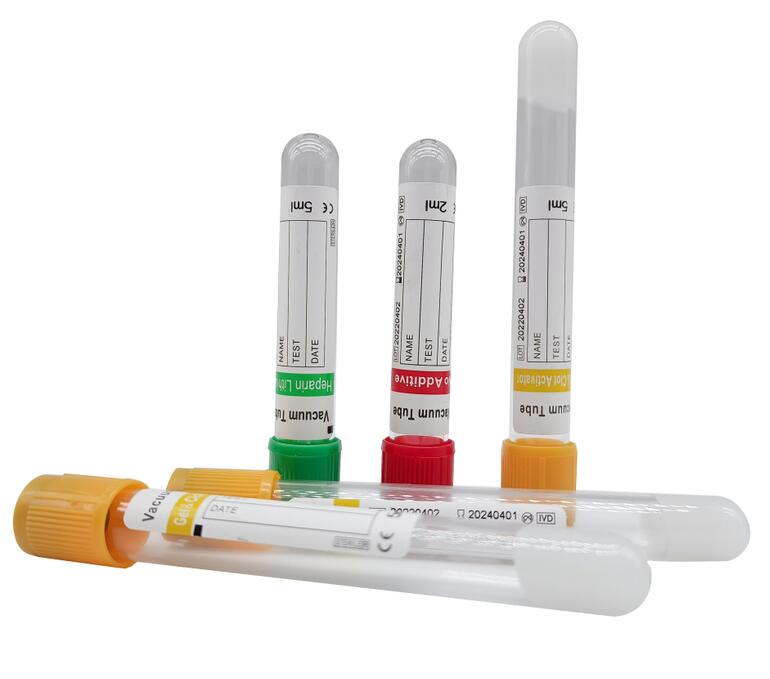Types of blood collection tubes and their purposes
2024-01-24
Blood collection tubes are specialized containers used for the collection and storage of blood samples for diagnostic testing. These tubes are designed to preserve the integrity of the blood sample and facilitate the separation of blood components, such as plasma or serum, for various laboratory analyses. Different types of blood collection tubes are available, each containing specific additives to suit the requirements of different laboratory tests.
Here are some common types of blood collection tubes and their purposes:
1. Red-Top Tube (no additive): This tube is used for serum collection. After blood is drawn and allowed to clot, it is centrifuged to separate the liquid portion (serum) from the clotted blood cells. Serum can be used for a wide range of tests.
2. Lavender-Top Tube (EDTA): The lavender-top tube contains the anticoagulant ethylenediaminetetraacetic acid (EDTA). It is used for collecting whole blood for hematological studies, including complete blood count (CBC) tests.
3. Green-Top Tube (Heparin): The green-top tube contains the anticoagulant heparin. It is used for collecting blood for tests that require plasma, such as certain chemistry and blood gas tests.
4. Blue-Top Tube (Sodium Citrate): The blue-top tube contains sodium citrate, an anticoagulant. It is commonly used for coagulation studies, including prothrombin time (PT) and activated partial thromboplastin time (aPTT).
5. Gray-Top Tube (Oxalate/Fluoride): The gray-top tube is used for glucose testing. It contains an anticoagulant (usually potassium oxalate) and a preservative (usually sodium fluoride) to inhibit glycolysis.
6. Yellow-Top Tube (ACD): The yellow-top tube contains acid citrate dextrose (ACD) and is used for specialized tests, such as DNA testing and paternity testing.
7. Tiger Top Tube (Serum Separator Tube): This tube typically has a red-and-gray or gold top and contains a gel separator. It is used for serum testing and facilitates the separation of serum from blood cells during centrifugation.
It's crucial for healthcare professionals to choose the appropriate blood collection tube based on the specific laboratory tests ordered. Proper collection, handling, and labeling of blood samples are essential to ensure accurate and reliable results in diagnostic testing.



